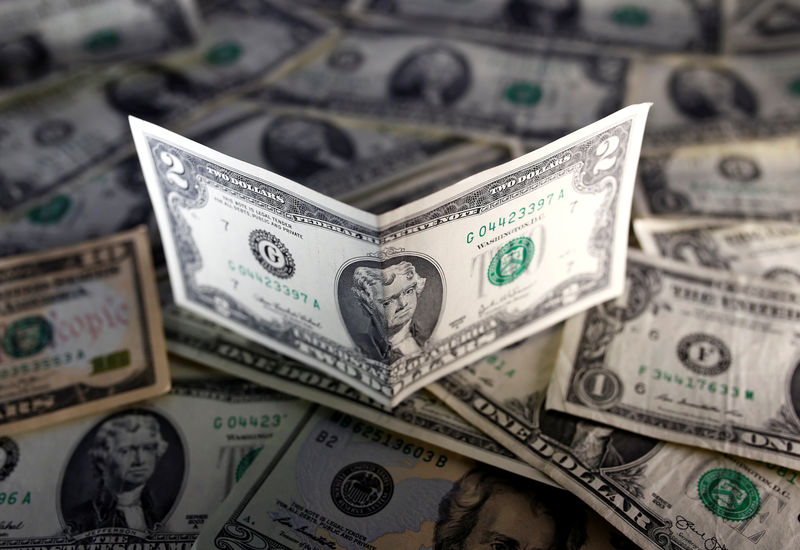By Gina Lee
Investing.com – The dollar was down on Tuesday morning in Asia, with demand for safe assets falling as negotiations for both the latest U.S. stimulus measures and a post-Brexit trade deal continue.
The U.S. Dollar Index that tracks the greenback against a basket of other currencies inched down 0.01% to 90.648 by 13:10 AM ET (5:10 AM GMT). It was little changed, after trading near lows not seen since April 2018 during the previous session.
Hopes were raised that a $908 billion bipartisan COVID-19 relief bill will be passed after it will reportedly be split into two separate packages.
Vaccine optimism increased as the U.S. and the U.K. began inoculation programs for BNT162b2, the COVID-19 vaccine co-developed by Pfizer Inc (NYSE:PFE) and BioNTech SE (F:22UAy). Singapore's Health Sciences Authority also gave approved BNT162b2 on Monday, with the first shipments due in the city by the end of December, said Prime Minister Lee Hsien Loong.
“With the roll‑out of vaccines starting in the U.S. and the UK, we expect shutdowns to reduce in frequency and intensity, allowing the USD to resume its downtrend,” Commonwealth Bank of Australia (OTC:CMWAY) currency analyst Joe Capurso said in a note.
An agreement on fiscal stimulus would also “undermine” the dollar, the note added.
However, the optimism was tempered by surging numbers of COVID-19 cases globally. New York City is bracing for its second full shutdown, with other parts of the country also facing possible tightened restrictions. European governments are also tightening measures, with London possibly seeing England’s toughest COVID-19 rules from Wednesday onwards as a new variant of the virus was discovered in the city.
The USD/JPY pair was inched up 0.09% to 104.12.
The AUD/USD pair was down 0.31% to 0.7513 and the NZD/USD pair inched down 0.04% to 0.7074.
The USD/CNY pair inched up 0.10% to 6.5544. Data released in China earlier in the day showed that industrial production growing 7% year-on-year, against the 7% growth in forecasts prepared by Investing.com and October’s 6.9% growth. Retail sales grew 5% year-on-year in November, down from the forecast 5.2% growth but up from October’s 4.3% growth.
The People’s Bank of China is likely to inject cash into the financial system for a fifth straight month on Tuesday via the medium-term lending facility. With some CNY600 billion ($91.66 billion) of one-year loans maturing in December, the central bank is widely expected to offer up to CNY800 billion in funding to banks
The GBP/USD pair inched up 0.08% to 1.3333 European Union chief Brexit negotiator Michel Barnier was optimistic about reaching a “good, balanced” deal with the U.K., raising hopes that a deal can be reached before the end of the year.
Meanwhile, the Federal Reserve leads a slew of central banks handing down policy decisions as it convenes later in the day and on Wednesday. The Bank of England and the Mexican, Swiss and Indonesian central banks will release their policy decisions on Thursday, with the Bank of Japan and the Bank of Russia handing down their decisions on Friday.
Some investors remained pessimistic about safe-haven assets' prospects.
“The big picture is that 2021 looks increasingly promising for global growth, and while the U.S. will certainly be a part of that, the global reflation trade is going to support the risk-sensitive currencies like the AUD. The dollar is likely to be in the group of laggards, along with the likes of the yen,” Westpac currency analyst Sean Callow told Reuters.
